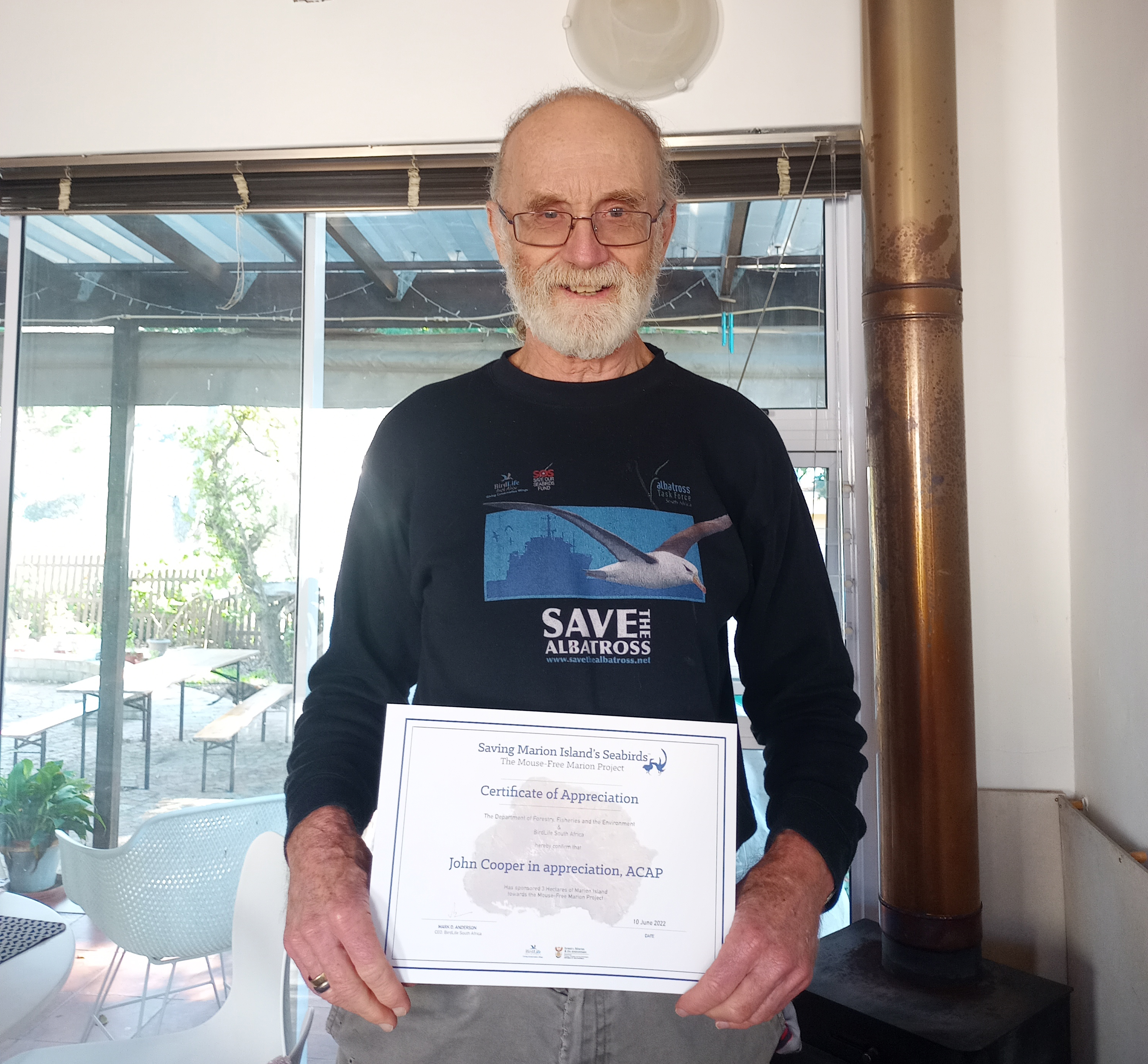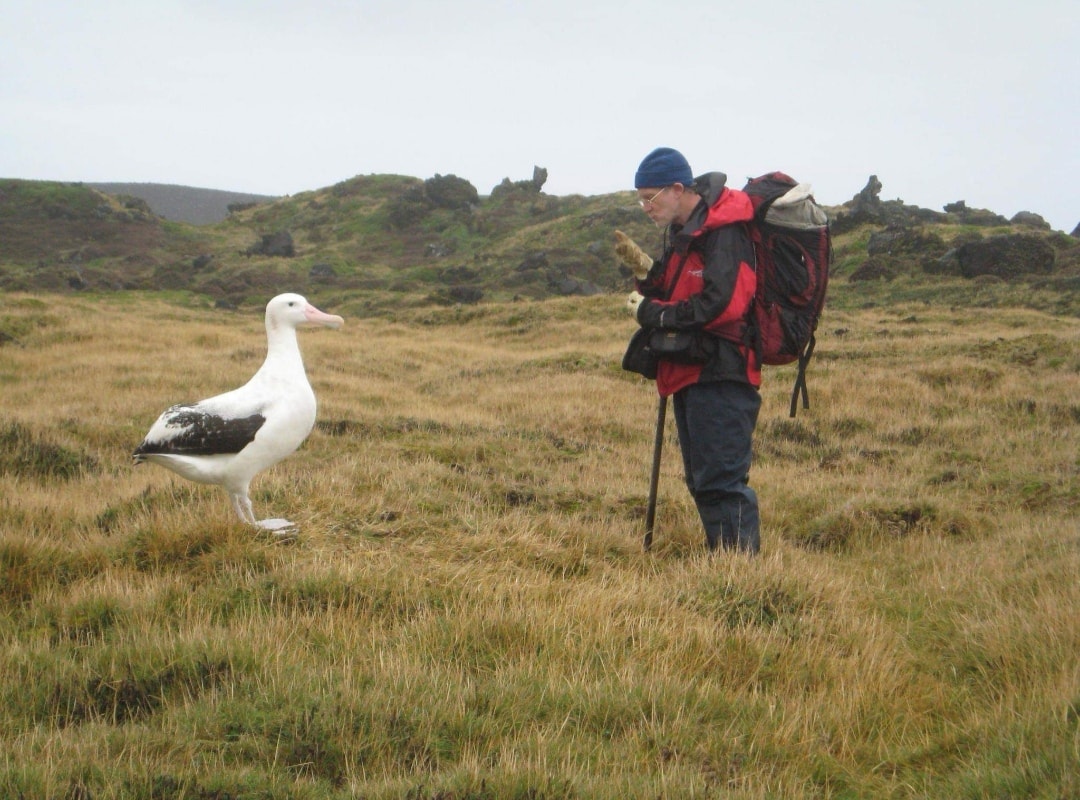
A most fitting retirement gift: ACAP has sponsored three hectares towards the eradication of Marion Island’s albatross-killing mice in my name; photograph by Ruth Cooper
“A soft release is a means by which an animal is gradually introduced or familiarized to a new environment before its eventual release in that location. This is a slow, gradual process that allows the animal to return to a safe resting place until it is ready to be completely independent.”
The ACAP Information Officer is retiring this week! After 17 enjoyable years of drafting and posting over 4000 searchable stories to ACAP Latest News it is time for me to take a break and have a little more time to entertain my granddaughter and to ride my bike. ACAP’s recently contracted Communications Advisor, Bree Forrer will be taking the lead in posting to ALN from now on. Moving into my “soft retirement”, I will pass on news I come across to Bree for possible featuring. Additionally, at least for the rest of the year, you will still be seeing my byline in ALN as a “News Correspondent”, so that between the two of us we can endeavour to keep up the accustomed steady flow of news.
I retired from my near 40-year university career as a marine ornithologist over 15 years ago. Since then, and for a few years before, I have been privileged to have been able to work with a fine community of people who I have met while attending meetings of the ACAP Advisory Committee and its working groups, as well as most of the Sessions of the Meeting of the Parties held to date. More particularly, I have been lucky to have had the unstinting support and friendship of three Executive Secretaries, ACAP’s long-standing Science Officer, and all the Agreement’s Chief Officers, many of whom have become personal friends.
During my years with ACAP, we have managed to start (and is some cases complete) a number of initiatives that I think serve the Agreement well in working towards its primary goal of improving the conservation status of the world’s albatrosses and petrels. In no particular order these include the series on breeding sites, species summaries, photo essays and infographics; most of which have been produced in the three ACAP languages of English, French and Spanish. Early on, we started a Facebook page which has steadily grown to 6100 followers; now complemented by ACAP’s Instagram account, commenced last month by Bree Forrer.
Most significantly, perhaps, in 2020 ACAP initiated a World Albatross Day, to be marked annually on 19 June. Despite one or two doubters, is seems that the celebration has taken off, with broad support now appearing for it from round the world. Planning is currently underway for “WAD2023”, the fourth World Albatross Day that ACAP will lead. A special pleasure for me has been the ongoing collaboration with Artists and Biologists Unite for Nature that has resulted in an amazing 500 artworks depicting all 31 ACAP-listed species being made available for ACAP to use. I will continue to work with ACAP on next year’s World Albatross Day (two new competitions are planned, so watch this space). Following sponsorships already obtained, I will be helping to produce seven more ACAP Species Infographics over the next 12 months in support of the annual day. I will be starting with an infographic for the Light-mantled Albatross, to be sponsored by BirdLife South Africa on behalf of the Mouse-Free Marion Project.
I am honoured to have been asked by the ACAP Secretariat to write a monthly series of guest posts for ACAP Latest News as its “Emeritus ACAP Information Officer”. These should commence in a month or so. Allowing me a more personal style of writing, look for my view on why the Mediterranean’s Yelkouan Shearwater should be ACAP listed (and what that might mean for the Agreement), my personal musings on ACAP’s development and progress over the years (with stories behind the stories), the odd book review, and maybe even an albatross haiku or two!


“Tell me a story”. I chat with a non-breeding Wandering Albatross that approached me on the path near Kaalkoppie, Marion Island in May 2012; artwork by Steve Erwin of Stencilworx, after a photograph by Wouter Hanekom
So, it is not quite “So long, and thanks for all the albatrosses” - I will be around for a little while longer!
John Cooper, ACAP Information Officer, 08 August 2022

 English
English  Français
Français  Español
Español